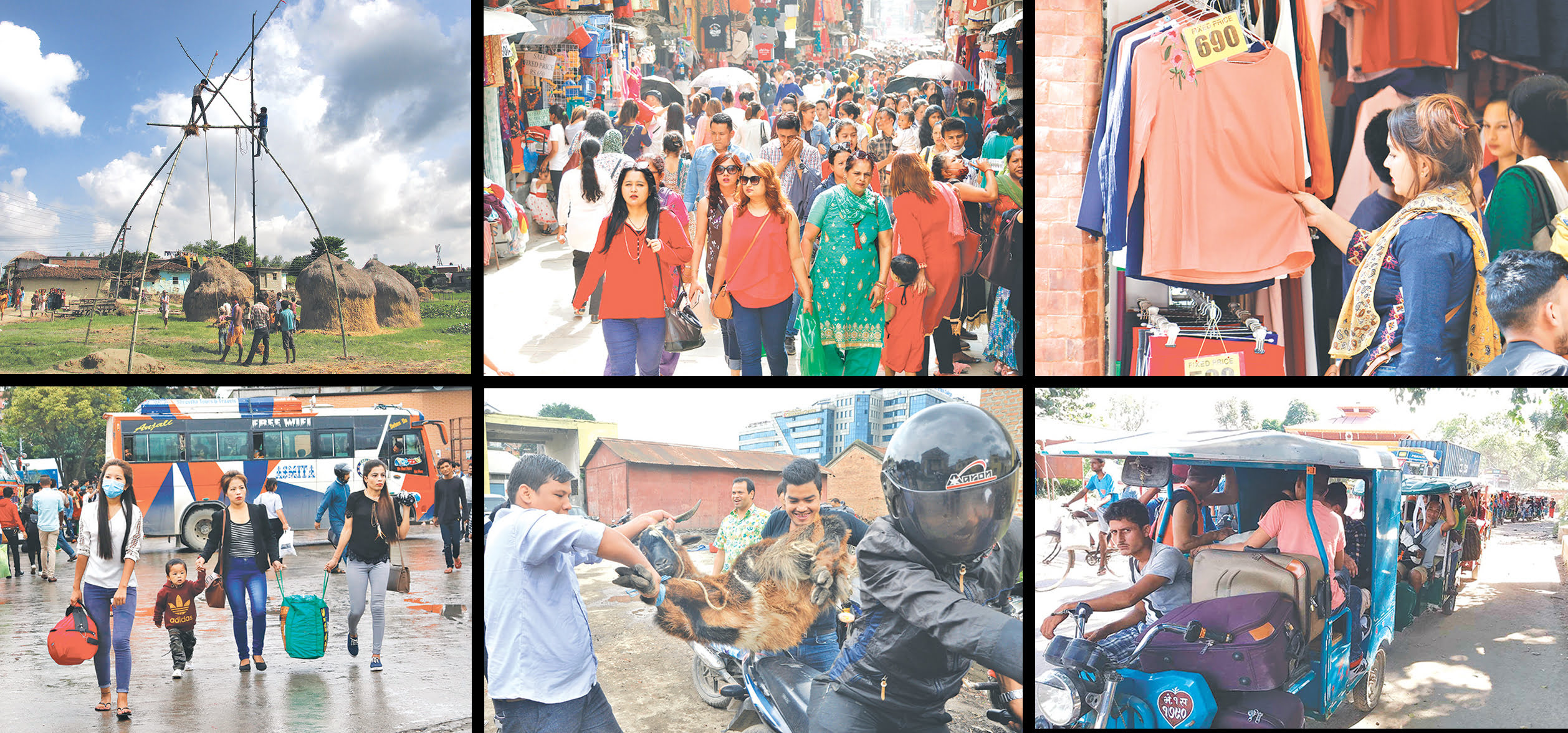
Introduction
In the heart of the Himalayas, Nepal boasts a unique cultural tapestry that weaves together ancient traditions and the promise of economic growth. At the center of this intricate web lies Dashain, a festival of profound importance to the Nepalese people. Dashain, a vibrant celebration that spans fifteen days, is more than just a religious observance; it is a manifestation of Nepal's rich cultural heritage.
This article delves into the significance of Dashain, exploring its historical roots, religious importance, and familial traditions. Yet, it goes beyond the festivity itself, unraveling the intricate relationship between these cultural traditions and the country's economic growth. As we journey through this exploration, we'll witness how Dashain acts as a bridge, connecting the past and the future, tradition and progress, and heritage and prosperity in this remarkable nation.
Historical Background
The origins of Dashain can be traced back to Hindu mythology, specifically the legendary battle between the goddess Durga and the demon Mahishasura. This battle's victory marked the triumph of good over evil, becoming a symbolic foundation for Dashain's religious significance. Over the centuries, Dashain has evolved, adapting to the changing sociocultural landscape of Nepal. Originally a Hindu festival, it has transformed into a more inclusive celebration, encompassing various communities and reflecting the nation's diversity and tolerance. Dashain stands as a living testament to Nepal's rich cultural history, embracing the amalgamation of indigenous practices, religious rituals, and traditional customs, which have shaped and defined the country's cultural identity, making it an integral part of the nation's heritage.
Cultural Significance of Dashain:
A. Dashain holds immense religious importance in Nepal. Rooted in Hindu mythology, it honors the victory of goddess Durga over the demon Mahishasura. This celebration reveres deities like Goddess Durga, Lord Ram, and other Hindu gods. During Dashain, rituals and practices, like animal sacrifices, symbolize the triumph of good over evil.
B. Dashain is a time for Nepalese families to unite and strengthen their bonds. Family reunions are at the heart of this festival, as people return to their ancestral homes to celebrate together. It's a time of love and respect, with elders blessing the younger generations, and the exchange of gifts and tika (a mixture of yogurt, rice, and vermillion) signifying the wish for prosperity and happiness.
C. Traditional customs and attire play a vital role during Dashain. People wear new clothes, often red, signifying strength and purity. Traditional food and feasting are central to the celebration, with special dishes like sel roti, meat, and fruits symbolizing abundance and sharing the joys of life with loved ones. Dashain is a time of cultural pride, spirituality, and togetherness.
Economic Impact of Dashain:
A. Dashain is a significant economic driver in Nepal. During this festival, there is a surge in consumer spending as people purchase new clothes, gifts, and food items. This boost in spending fuels several industries, such as retail, agriculture (for special festival foods), and transportation (to visit family and friends).
B. The festival creates seasonal employment opportunities. Many people find temporary jobs in agriculture and transportation to meet the increased demand for Dashain. This influx of workers can influence the labor market, impacting wages and job availability during this period.
C. Dashain also has a notable impact on tourism. Tourist influx surges as travelers are drawn to Nepal to experience the vibrant festival. This has positive economic repercussions for the hospitality and tourism sectors, as hotels, restaurants, and tour operators benefit from the increased tourism during Dashain, contributing to the country's economy.
Dashain and Sustainable Economic Growth:
A. Dashain plays a pivotal role in encouraging local businesses and supporting the economy. During the festival, there's a heightened focus on promoting Nepalese products, from traditional clothing to locally-made gifts and food items. This surge in demand benefits small and medium-sized enterprises (SMEs) and helps sustain local economies, providing opportunities for growth and development.
B. Dashain is not just about individual celebration; it also fosters community development. The festival underscores the importance of social cohesion, bringing people together to celebrate their shared cultural heritage. Dashain often leads to community projects and initiatives, such as charity work and development projects, which strengthen the social fabric and improve living conditions within communities.
C. Balancing tradition and modernity is crucial for sustainable economic growth. While Dashain's cultural traditions are deeply cherished, there are also opportunities and challenges in integrating modern economic practices. The challenge lies in maintaining cultural heritage while harnessing economic opportunities effectively. Finding this balance ensures that Dashain remains a source of cultural pride while also contributing to Nepal's sustainable economic growth and development.
Challenges and Future Prospects:
A. Environmental concerns arise due to increased consumerism during Dashain, potentially straining the environment. However, sustainable alternatives, like promoting eco-friendly celebrations and reducing waste, offer a positive future prospect.
B. Technology plays a dual role in preserving traditions and boosting the economy. Digital Dashain celebrations can keep traditions alive while online marketplaces provide economic opportunities.
C. Government and private sector initiatives can support sustainable cultural practices, aligning tradition with progress. Economic development programs during Dashain offer the prospect of a balanced, prosperous future for Nepal while preserving its cultural heritage.
Case Studies - Successful Initiatives:
A. Businesses Leveraging Dashain:
1. A local handicraft business in Kathmandu saw a 30% increase in sales during Dashain by promoting traditional handcrafted items. This success demonstrates how supporting local artisans can enhance economic growth while preserving cultural heritage.
2. Traditional clothing/garments shops across Nepal have experienced a surge in sales, especially during Dashain. By offering a blend of tradition and fashion, these shops have thrived, showcasing the potential of aligning culture with commerce.
B. Community-Driven Projects:
1. A community-led initiative in a rural village harnessed Dashain's festive spirit to fundraise for a local school. This project not only improved education but also fostered unity among community members.
2. Community projects, such as road repairs and clean-up drives, have enhanced local development during Dashain, showcasing the positive impact of collective action on the area's infrastructure.
C. Government Programs and Policies:
1. Nepal's cultural preservation and economic growth initiatives have seen encouraging results. By supporting cultural events and heritage sites, these programs maintain Nepal's rich traditions while boosting the economy.
2. Measuring the success of these programs through metrics like increased tourism, job opportunities, and cultural preservation demonstrates their effectiveness in aligning cultural heritage with economic progress.
Conclusion:
In Nepal, Dashain is more than just a festival; it's the heartbeat of the nation. Its significance goes beyond traditions; it's the bridge that connects culture and economic growth. As we've seen, Dashain fuels local businesses, fosters community development, and embodies the fusion of tradition and modernity. However, this remarkable celebration also demands a balance: sustainable development that respects and preserves cultural heritage. Dashain reminds us that culture and economy can thrive together, sustaining Nepal's rich traditions while propelling it towards a prosperous future.



